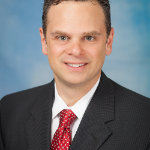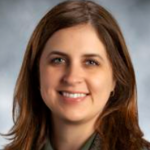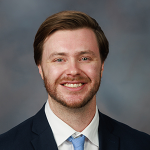Developmental and Epileptic Encephalopathies: Enhancing Patient Outcomes through Personalized Care
| Target Professions: | DO, MD, Physician Assistant, Nurse Practitioner, Nurse |
| Target Specialties: | Neurology, Epileptology, Pediatrics |
| Credits Available: | 4.25 AMA PRA Category 1 Credit™/ MOC Points |
This curriculum is designed to empower neurologists, epileptologists, and pediatricians with the knowledge to address the unique challenges posed by Developmental and Epileptic Encephalopathies (DEEs). Through a blend of self-study modules, live discussions, and action planning, participants will learn to optimize care for DEE patients by understanding the impact of anti-seizure medications on both seizure and non-seizure symptoms.
CME/CE Accreditation Information
Itinerary
Part 1
Please answer the following questions to assess your understanding of non-seizure symptoms in patients with developmental and epileptic encephalopathies.
This module gives an overview of DEEs and their non-seizure symptoms, and why these symptoms are important to manage.
This module discusses the major anti-seizure medicines used for patients with DEEs and how they impact the non-seizure symptoms of these disorders.
This module discusses the importance of individualizing care for patients with DEEs and reviews the non-pharmaceutical interventions for these patients.
Now that you have reviewed the self-study modules, answer the following questions to assess your understanding of non-seizure symptoms in patients with developmental and epileptic encephalopathies (DEEs).
This discussion focuses on the identification and clinical significance of non-seizure symptoms in DEEs, emphasizing how these symptoms affect patient quality of life and treatment decisions.
Part 2
This activity features a boy with LGS who is sleepy at school. In this patient case activity, you will discuss possible reasons for his sleepiness, anti-seizure meds and side effects, and monitoring patients with DEEs.
This activity features a girl with tuberous sclerosis who is having some behavioral changes that concern her family. The activity discusses ways to approach the dynamic situation that patients with various DEEs can present.
In light of the information reviewed and discussed during this program, please share an action plan that you will implement to improve the diagnosis and management for your patients with Developmental and Epileptic Encephalopathies (DEEs).
This discussion explores the therapeutic impact of newer anti-seizure medications on non-seizure symptoms in DEEs and strategies for individualized patient care.
Curriculum is Currently Closed
Thank you for your interest. Currently, the curriculum is closed for enrollment but we encourage you to keep an eye out for future opportunities or alternative programs that might align with your educational goals.
Completed Groups
Director of Pediatric Epilepsy
Director of Pediatric Epilepsy
 Rachit Patil, MD
Rachit Patil, MDAsst Professor of Pediatrics, Neurology, Neurosurgery
 Gewalin Aungaroon, MD
Gewalin Aungaroon, MDAssociate Professor
Medical Director of Epilepsy
 Sharifa Glass, MD
Sharifa Glass, MDFounder, Owner
System Clinical Pharmacy Specialist
APRN
 Robert Stowe, MD
Robert Stowe, MDInstructor of Neurology
 James Owens, MD
James Owens, MDClinical Professor, Pediatrics (Child Neurology)
Assistant Professor
 Jonathan Williams, MD, MSCR
Jonathan Williams, MD, MSCRAssistant Professor
 David Anschel, MD
David Anschel, MDDirector St. Charles Epilepsy, Adjunct Associate Professor NYU and NYIT
 Robert Stowe, MD
Robert Stowe, MDInstructor of Neurology
Senior Clinical Program Director- Neurology & Neuroscience
Nurse Practitioner/Associate Clinical Manager, Neurology NP
 Nancy McNamara, MD
Nancy McNamara, MD Mary Zupanc, MD
Mary Zupanc, MDClinical Adjunct Professor, Department of Neurology
 Patty Osborne Shafer, RN, MN
Patty Osborne Shafer, RN, MNNurse Specialist
 Doug Duffee, MD
Doug Duffee, MDProgram Director IM Residency
Assistant Professor of Dermatology & Pediatrics
Professor of Neurology
 Parks Douglass, MD
Parks Douglass, MDCNP FELLOW (EEG/EPILEPSY)
